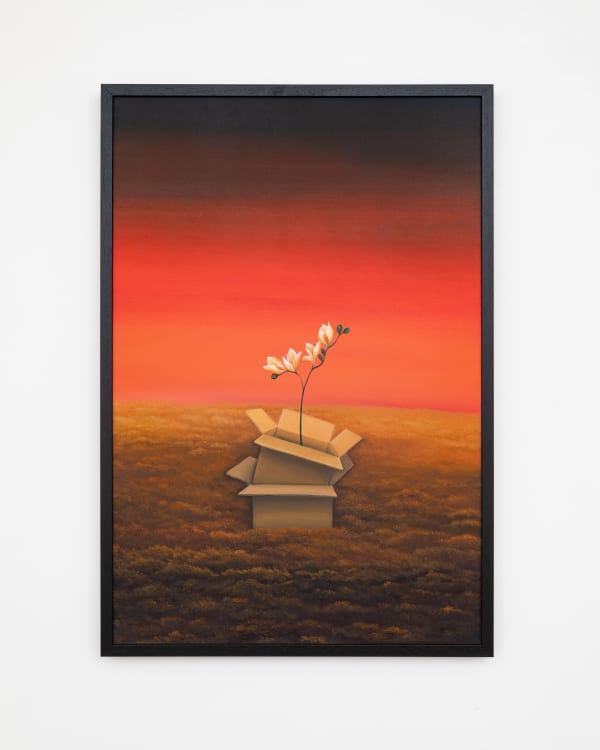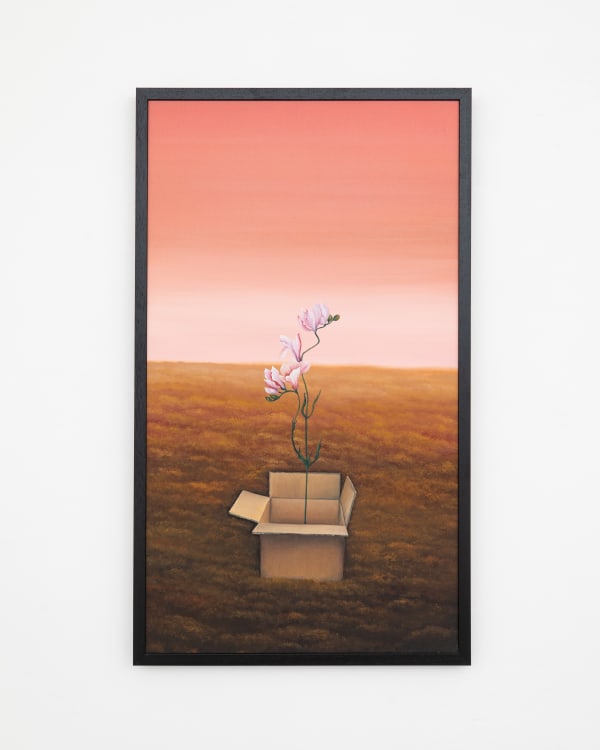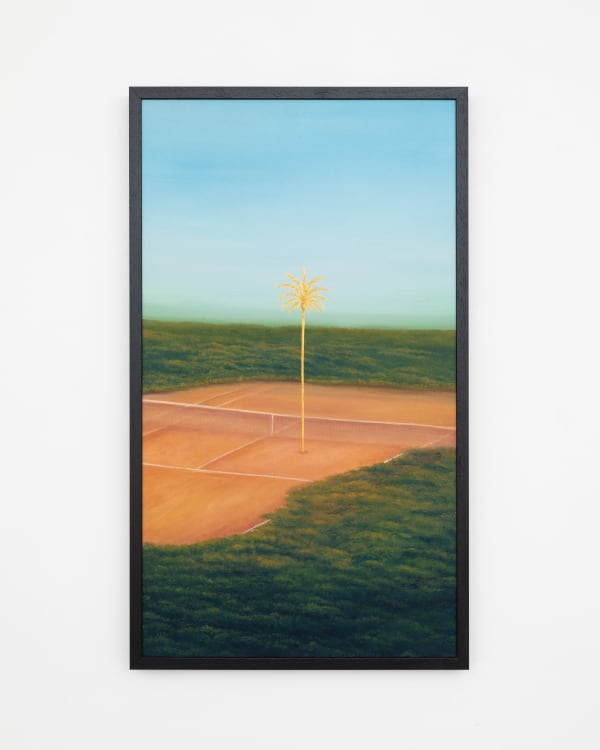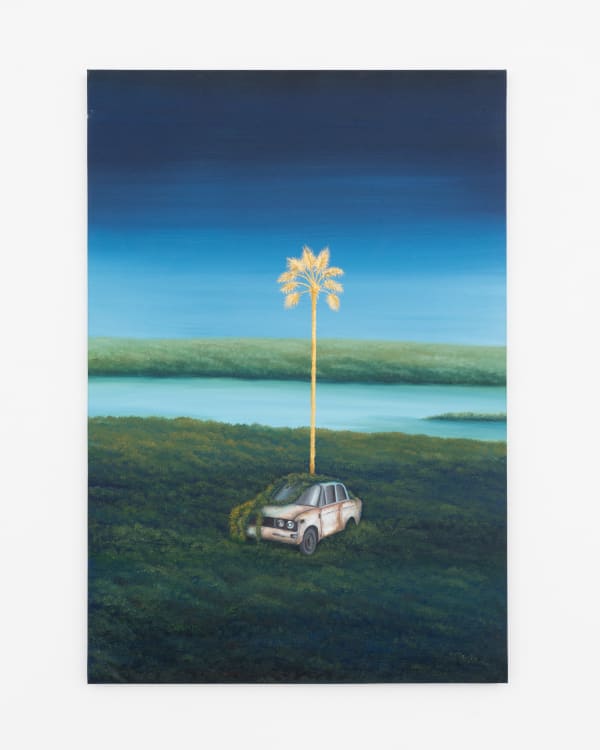-
Houda Terjuman
When Hope Smells Like Petrichor -

-
-
Solo exhibitions include (Upcoming) Kristin Hjellegjerde Gallery, London, UK (2022); Galerie GVCC, Casablanca, Morocco (2021); Untold Stories at Galerie Siniya in Marrakech, Morocco (2019); Because these wings can no longer fly, an artistic project with Arts Cabinet in London, UK (2019); Un Oeil Ouvert sur le Monde Arabe, a collaboration with FFCreative Paris, for “La Nuit Blanche” at L’Institut du Monde Arabe, Paris, France (2018); Casa Arabe, Madrid, Spain (2018); Collaboration with Alex Hammersly and Hollandridge Group, London, UK ( 2018); Taghazout Bay, Agadir, Morocco (2016).
-
Group exhibitions include Re-composing, The 369 Art Gallery, Palazzo Bembo, Venice, Italy (2022); Art Dubai, Kristin Hjellegjerde Gallery, Dubai, United Arab Emirates (2022); Facing the Sun, Kristin Hjellegjerde Gallery, Schloss Görne, Germany (2021); Galerie Géraldine zberro, Paris, France (2021); Thinking Out Loud, Pulpo Gallery Murnau am Staffelsee, Germany (2021); Musee de la Kasbah, Tangier, Morocco (2021); Rofa Projects, Potomac, Maryland, USA (2020); Don’t Ask Me Where I’m From, Aga Kahn Museum, Toronto, Canada (2020); Galleria delle Prigioni, Luciano Benetton Foundation, Treviso, Italy (2019); Hybrid Migrant, a touring exhibition with the Agha Kahn Museum and Imago Mundi, Luciano Benetton’s Global Art project, Treviso, Toronto, Vancouver, Houston, Dallas, Paris, London, Lisbon and Dubai (2019-2020); Wondrous Worlds, Galerie Michael Haas, Berlin, Germany(2019), Oeuvres et Recherches, GVCC, Casablanca, Morocco (2018), Galerie 21, Geneva, Switzerland (2018);Black Sphinx II, Primae Noctis Gallery, Lugano, Switzerland (2018), La Sfinge Nera II, Primo Marella Gallery, Milan, Italy(2018), Mercedes Roldan, Madrid, Spain(2017), Merchant of Dreams, Viborg Kunsthal, Denmark (2016); Musée Mohammed VI d’Art Contemporain, Rabat, Morocco (2015); Femmes et Religion, Bibliothèque Nationale du Royaume du Maroc (2015).
-
-

-
-
‘When I was a child, I literally felt as if I was floating between my various identities,’ says the artist. ‘I was not rooted in any place and felt as if I did not belong to any community. Being uprooted produces an underlying feelings of fear, loneliness and instability, but it also brings adaptation, open-mindedness, tolerance, empathy for the unknown, a sense of freedom and creativity.’ Art-making came to her, then, as both a form of release – a way of disentangling complex emotions and thoughts – and as an expression of solidarity with displaced individuals and communities across the globe. This particular exhibition takes its departing point from Terjuman’s childhood memory of spending summers in the Swiss alps with her grandmother and the smell of dewy grass in the mornings. ‘Smells and sounds are often vehicles of emotion to me,’ she says. ‘When I smell wet grass it brings me happiness, confidence and hope. ’ Indeed, in each of the paintings, the objects appear buried within or floating above soft blankets of grass that seem to melt into the horizon, conveying both a sense of expansiveness and calm.
-
In some of the paintings, the background itself is painted gold, creating a flat, glowing surface on which pieces of land appear floating. One work depicts an abandoned house with two trees growing through its roof, while another portrays a ship half-buried within the earth. These ‘floating’ works explore feelings of rootlessness and the search for stability while the gold paint makes reference to the dream of El Dorado, a lost city of gold. However, rather than focusing on the idea of material treasure or wealth, Terjuman imagines El Dorado as a state of mind, where we are able to find hope and prosperity in the uncertain.
-
Yet, there is something unsettling about these scenes. Absent of bodies or domestic settings, the furniture has an uncanny presence. In one painting, for example, an empty chair is turned towards a street lamp, while in another a pair of chairs appear translucent, fading like ghosts within a woodland illuminated by a strange, orange light. Meanwhile, cars appear abandoned, rusting and overgrown. We are left to wonder where these places are, where these objects came from, but while we might be initially unsettled by this sense of mystery, these are works that reward contemplation, seemingly unfolding before the gaze. This is, in part, due to the delicate details and careful layering of colour, but also owing to the artist’s use of symbolism to create a poetic visual language that evolves across multiple works. We might notice, for example, the recurring presence of tall, straight, slender palm trees, painted in gold. These, like the flowers growing from the cardboard boxes, are surrogates ‘for us’, Terjuman explains, or rather a tether to our past that is alive and luminous, that can and does continue to coexist within our present.
-
-
Enquire
-
 Houda Terjuman, Time suspended I, 2021
Houda Terjuman, Time suspended I, 2021 -
 Houda Terjuman, Time suspended II, 2021
Houda Terjuman, Time suspended II, 2021 -
 Houda Terjuman, Corridors of Memory I, 2022
Houda Terjuman, Corridors of Memory I, 2022 -
 Houda Terjuman, Corridors of memory II, 2022
Houda Terjuman, Corridors of memory II, 2022
-
 Houda Terjuman, Drifting Destinies I, 2022
Houda Terjuman, Drifting Destinies I, 2022 -
 Houda Terjuman, Untold stories, 2021
Houda Terjuman, Untold stories, 2021 -
 Houda Terjuman, Glance through an open door, 2022
Houda Terjuman, Glance through an open door, 2022 -
 Houda Terjuman, Fragmented memory I, 2022
Houda Terjuman, Fragmented memory I, 2022
-
-
Houda Terjuman: When Hope Smells Like Petrichor
Past viewing_room


















